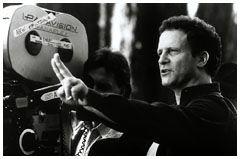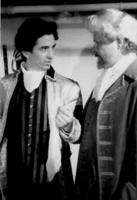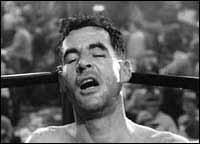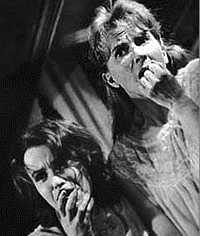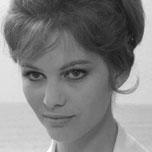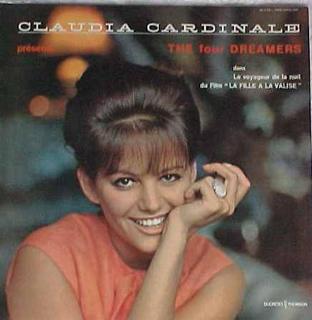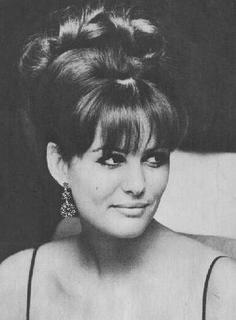2046
I’m not sure I understand those writers who have suggested that experience with
In the Mood for Love isn’t absolutely necessary to follow or enjoy Wong Kar-wai’s follow-up film,
2046, which shares a main character with
Love and references, explicitly and obliquely, events and near-events that were the meat of the previous film. My feeling is that what’s being suggested is, seeing
2046 as merely a kaleidoscope of beautiful imagery or a cinematic parade of stunning women is good enough, because otherwise concentrating on the movie’s “plot” would be too headache-inducing. And my guess is, it’s the writers who feel this way who missed
In the Mood for Love, and advocating
2046 as merely a gorgeous visual bliss-out, deemphasizing its content, is their way of saying they didn’t “get” the new film without actually saying as much. It all sounds curiously like the cynical marketing of
2001: A Space Odyssey as a head trip to a potential audience whose brainpans were already too befuddled to engage Kubrick’s film on its own terms-- it was made acceptable to account for it simply as a series of pretty pictures, and MGM cleaned up when it re-released the film.
I saw
2046 last night with a friend who had not seen
In the Mood for Love, and he admitted quite a bit of difficulty being able to follow the film on its emotional level— he couldn’t figure out, for example, why Chow (Tony Leung Chiu Wai) was so indifferent to Bai Ling (Ziyi Zhang) until the film’s conclusion, at which point the movie’s chance of coalescing for him as a narrative was fairly well muted. (The underlying subtext of his response was, of course, why would anyone dump Ziyi Zhang? What, is this Chow fella crazy or something?)

But if you’re able to reference the film’s many allusions to
Love and plug them into what Wong has constructed here—a fictional, futuristic world inside the mind of a writer, living in “the present” (sometime after the 1968 conclusion of
Love but before the year 2046) who is also constantly projecting backward to his great lost love, the non-affair affair with Su Li Zhen (Maggie Chung Man Yuk) in the previous film, who shows up here in three separate incarnations (played by two different female icons of Chinese cinema)—you’ll have plenty of grist for the intellectual mill to go along with the ravishment of your senses. That past sentence alone hopefully suggests the folding in on themselves that makes
2046 and
In the Mood for Love seem like one film instead of two, and certainly far more than empty exercises in set design, mind-boggling cinematography, or obsessive cataloguing of great beauties in a seemingly never-ending series of gorgeous, form-fitting dresses* and retro-hip bouffant hairdos. Wong is after how the mind wrestles with romantic obsession, how the workings and responsibilities and realities of love contrast with simple romantic attachment, and where (2046—a room, a state of mind, a place far in the future from which no one, naturally, has ever returned?) that obsession might lead. The director’s elliptical poetry and teasingly erotic visual grammar get us there in
2046, a movie which seemed, to this eye, to have almost no narrative peaks while I was watching it. I found Wong and cinematographer Christopher Doyle’s imagery so fundamentally transfixing that I was satisfied with the movie’s lulling rhythms, and the intertwining connections and dangling questions my mind was so involved in decoding. Yet upon reflection (and revisiting the trailer this afternoon), the movie has only gained in vitality, and its visual world-- not nearly so urban city futuristic as it is a somewhat claustrophobic interior landscape glowing with desire and regret-- seems so irresistibly seductive and exciting that I can’t wait to immerse myself in it again.
* UPDATE 9/18/05 11:54 pm: They're called
cheongsams.
Aren't they lovely?UPCOMING DVD RELEASES YOU SHOULD RENT INSTEAD OF THE O.C. BOX SETI don’t know whether I just haven’t been paying as close attention as I should, but it seems like there’s an awful lot of worthwhile DVDs coming our way in the next month or so that would make either great additions to a collector’s library or to one’s Netflix queue. My thanks to Jim Knipfel of the
New York Press and the good folks at
Film Comment-- the “Home Movies” section, which tantalizingly concludes each issue of the magazine—they were the sources of information on the titles you’ll see listed below. All of these films are interesting and, it seems to me, worth pursuing—some I have seen and loved, some I have seen and not loved, some I have not seen and hope to encounter very soon. Some are already available for you to see, but most are Coming Soon To A Home Theater Near You. I hope you find something on this list worth checking out too. If not, well, there’s always the New Releases shelf at your local Franchise-O-Rama video store…
An Angel at My Table Jane Campion, Criterion (9/20) *
Anna Christie Clarence Brown, Warner (available now) **
Anna Karenina Clarence Brown, Warner (available now) **
Bad Timing: A Sensual Obsession Nicolas Roeg, Criterion (9/27) *
Billion Dollar Brain Ken Russell, Columbia/TriStar (10/4)
Blood for Dracula (aka Andy Warhol’s Dracula) Paul Morrissey, Image (9/20)
Boudu Saved From Drowning Jean Renoir, Criterion (available now)
Camille George Cukor, Warner (available now) **
Cat People/Curse of the Cat People (Double Feature) Jacques Tourneur, Robert Wise/Gunther von Fritsch, Warner (10/6) ***
The Chronicle of Anna Magdalena Bach Jean-Marie Straub, Daniele Huillet, New Yorker (10/4)
Cop James B. Harris, MGM/UA (10/4)
Demon Seed Donald Cammell, Warner (10/4)
Die, Monster, Die!/The Dunwich Horror (Double Feature) Daniel Haller, MGM Midnite Movies (9/20)
Flesh and the Devil Clarence Brown, Warner (available now) **
Flesh for Frankenstein (aka Andy Warhol’s Frankenstein) Paul Morrissey, Image (9/20)
The Flowers of St. Francis Roberto Rossellini, Criterion (available now)
The Ghost Ship Mark Robson, Warner (10/6) ****
Grand Hotel Edmund Goulding, Warner (available now) **
Hammer Horror Series (Two-Disc Set) includes
Brides of Dracula,
Curse of the Werewolf,
The Phantom of the Opera (Terence Fisher),
Night Creatures aka
Captain Clegg (Peter Graham Scott),
Kiss of the Vampire (Don Sharp),
Paranoiac,
Nightmare aka
Here’s the Knife, Dear—Now Use It,
The Evil of Frankenstein (Freddie Francis) Universal (available now)
The Innocents Jack Clayton, Fox (available now) *
In the Year Of the Pig Emile de Antonio, Home Vision (9/20) *
Isle of the Dead/Bedlam (Double Feature) Mark Robson, Warner (10/6) ***
I Walked With a Zombie/The Body Snatcher (Double Feature) Jacques Tourneur, Robert Wise, Warner (10/6) ***
The Leopard Man Jacques Tourneur, Warner (10/6) ****
Major Dundee (Extended Version) Sam Peckinpah, Sony (9/20)
The Miracle of Morgan’s Creek Preston Sturges, Paramount (now available)
The Man Who Fell to Earth Nicolas Roeg, Criterion (9/27)
Masculin Feminin Jean-Luc Godard, Criterion (9/20)
Mata Hari George Fitzmaurice, Warner (available now) **
The Mysterious Lady Fred Niblo, Warner (available now) **
Naked Mike Leigh, Criterion (9/20) *
Ninotchka Ernst Lubitsch, Warner (available now) **
Oldboy Chan-wook Park, TLA (available now)
Point of Order Emile de Antonio (release date TBA)
Queen Christina Rouben Mamoulian, Warner (available now) **
Le Samourai Jean-Pierre Melville, Criterion (10/18)
Save the Green Planet! Jun-hwan Jeong, Koch (available now)
The Seventh Victim Mark Robson, Warner (10/6) ****
The Stationmaster’s Wife Rainer Werner Fassbinder (release date TBA)
The Temptress Fred Niblo, Mauritz Stiller, Warner (available now) **
* When you rent this one, please feel free to check out the excellent closed-captioning and/or SDH subtitles, courtesy of Thom MacGregor and/or myself
** Available separately or together in the Warner Garbo: Signature Collection box—check CostCo for a potentially great deal on this if you’re buying; I picked the Warner Film Noir and Gangsters box sets there for about $20-30 cheaper than the list price of each
*** Available separately or together in the Warner Val Lewton Horror Collection box—see above for CostCo buying advice
**** Available only as part of the Warner Val Lewton Horror Collection box
THIS WEEKEND’S DRIVE-IN NEWSI’m leading a caravan of friends and coworkers to the Mission Tiki tonight, just part of the grand plan to get the word out about this great drive-in and others in the area that are still going strong. We’re bringing our folding chairs and settling in early (manager Jeff Thurman is kindly letting us in before the box office officially opens so we can get a good spot) for a double feature of
The 40-Year-Old Virgin and
The Skeleton Key. If all goes well, this might become a regular get-together for the folks at my office—we’ve already tentatively planned another outing in October so that those who weren’t able to do this one can get in on the fun.
The Southern California Drive-In Movie Society is going great guns too. We’re scheduled to meet next Saturday, September 24, at the Vineland Drive-In in City of Industry. If you’d like to stop by and chat or fill out a registration form to join the club on your way through the snack bar, we’ll be set up in the snack bar through the first feature. On October 29 the club will be back at the Mission Tiki, and rumor has it there might even be a little TV coverage to welcome us and help get the word spread even further. More on that as Halloween weekend gets closer.
Bob Golding, owner of the
Marysville Drive-In in Marysville, Central California, passed away unexpectedly this past Tuesday, September 13. A report in the Marysville-Yuba City
Appeal-Democrat said that Golding’s death was ruled
accidental and that his family will be attempting to carry on with the theater, despite numerous reports over the summer that the drive-in was facing imminent closure. We members of the Southern California Drive-In Movie Society extend our condolences and best wishes to the Golding family as they endeavor to hold Bob’s spirit close to their own and keep the gates of the Marysville Drive-In open, just as he was dedicated to doing up to the day he died.
THE RETURN OF PROFESSOR WAGSTAFFLast but not least, I finally got going on the answers round-up post for Professor Wagstaff’s Summer of 42 (Questions, That Is) Wednesday night. Unfortunately, it took me three hours just to compile the notes! By the time I finished doing that I was delirious. But everything is gathered together, and if it hadn’t been for Wong Kar-wai I probably would have gotten at least a start on the big Wagstaff follow-up. But you got this instead. (Do you feel lucky…
punk?) The good news is, in going over these answers again, I was really happy to be reminded just how hilarious some of them were, and how very entertaining and fascinating almost all of them were. We got some new blood involved in the contest this time around, which is always nice, but the veterans came through as well. And just a heads-up, students—the faculty is gathering up steam for a Christmas holiday season quiz to keep you occupied whilst you sit beneath the tree and gather dry pine needles upon your scalp, so be prepared. Golly, what balls! Terrifying the natives with the specter of a new quiz when the good professor hasn’t even returned the term papers on this one yet! But don’t worry—I’m pretty sure I’ll fry for it someday. Until then, time for some sleep. Must be awake and lucid at the drive-in, you know.
 The rumors that you may have heard floating around about a wide theatrical release of a restored version of Stanley Kubrick's 1980 horror film The Shining were confirmed today by longtime Kubrick associate and the film's associate executive producer, Armen Karshargian, here in Burbank. Apparently buoyed by the box-office success of the special edition of The Exorcist back in September of 2000, studio executives, in conjunction with Karshargian and representatives of the Kubrick estate, revealed today that the film will be rushed into theaters to take advantage of the Halloween season and commemorate the film's 25th anniversary. (The release date was announced as October 24). The restored version will feature no added material, unlike the Exorcist rerelease, but some material has been recut slightly to conform to instructions found in the director's archives, reversing changes that were made in the wake of a less-than-satisfying sneak preview held in Lawrence, Kansas just two weeks before the film was originally released in May, 1980. "Fans of The Shining and Stanley's films may notice that some critical scenes play slightly differently," Karshargian said, adding that most changes could be equated to the difference between a "C" note on a musical scale and a C-sharp. "The scenes are still there and the film is recognizably what it has always been," Karshargian continued, "but the changes we initiated from Stanley's notes will hopefully have the effect he intended-- to expand the appeal of the film to a wider demographic and add a further frisson of terror to a few scenes that he always felt came off a little flatter than expected." Karshargian also noted that if the upcoming re-release of the restored version of The Shining does as well as expected, fans of the director's work can look forward to a similar revisiting of another Kubrick film, Barry Lyndon. "Stanley always imagined Lyndon's battle scenes as a bit more muscular and hallucinatory than what the studio had in mind when the film was originally released in 1975," claims the producer. If the project sees the light of day, Karshargian said, "expect a fully more visceral experience," which may utilize up to 45 more minutes of footage shot by Kubrick that he was forced to excise. Karshargian likens it to the work of another director familiar with the horrors of the battlefield: "I expect it'll end up looking a bit like an Oliver Stone film, but from footage shot 10 years before Stone ever exposed a frame of film as a director." The studio also made the trailer for the restored version of The Shining available today. You can see it here, but you'll need Quick Time.
The rumors that you may have heard floating around about a wide theatrical release of a restored version of Stanley Kubrick's 1980 horror film The Shining were confirmed today by longtime Kubrick associate and the film's associate executive producer, Armen Karshargian, here in Burbank. Apparently buoyed by the box-office success of the special edition of The Exorcist back in September of 2000, studio executives, in conjunction with Karshargian and representatives of the Kubrick estate, revealed today that the film will be rushed into theaters to take advantage of the Halloween season and commemorate the film's 25th anniversary. (The release date was announced as October 24). The restored version will feature no added material, unlike the Exorcist rerelease, but some material has been recut slightly to conform to instructions found in the director's archives, reversing changes that were made in the wake of a less-than-satisfying sneak preview held in Lawrence, Kansas just two weeks before the film was originally released in May, 1980. "Fans of The Shining and Stanley's films may notice that some critical scenes play slightly differently," Karshargian said, adding that most changes could be equated to the difference between a "C" note on a musical scale and a C-sharp. "The scenes are still there and the film is recognizably what it has always been," Karshargian continued, "but the changes we initiated from Stanley's notes will hopefully have the effect he intended-- to expand the appeal of the film to a wider demographic and add a further frisson of terror to a few scenes that he always felt came off a little flatter than expected." Karshargian also noted that if the upcoming re-release of the restored version of The Shining does as well as expected, fans of the director's work can look forward to a similar revisiting of another Kubrick film, Barry Lyndon. "Stanley always imagined Lyndon's battle scenes as a bit more muscular and hallucinatory than what the studio had in mind when the film was originally released in 1975," claims the producer. If the project sees the light of day, Karshargian said, "expect a fully more visceral experience," which may utilize up to 45 more minutes of footage shot by Kubrick that he was forced to excise. Karshargian likens it to the work of another director familiar with the horrors of the battlefield: "I expect it'll end up looking a bit like an Oliver Stone film, but from footage shot 10 years before Stone ever exposed a frame of film as a director." The studio also made the trailer for the restored version of The Shining available today. You can see it here, but you'll need Quick Time.
